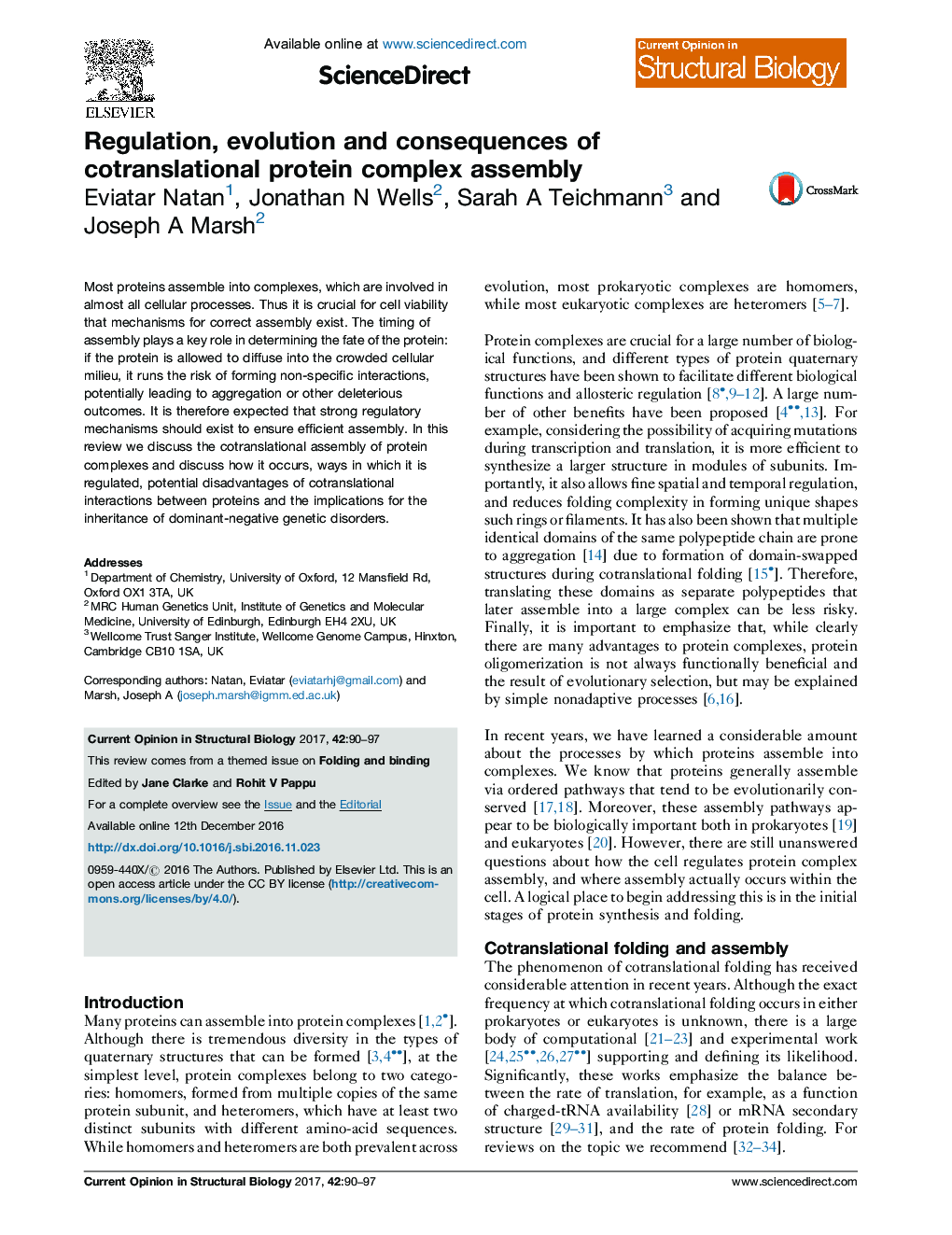| کد مقاله | کد نشریه | سال انتشار | مقاله انگلیسی | نسخه تمام متن |
|---|---|---|---|---|
| 5510878 | 1539338 | 2017 | 8 صفحه PDF | دانلود رایگان |
- Cotranslational assembly of protein complexes is a widespread phenomenon.
- Cotranslational assembly can occur via cis- or trans-acting mechanisms.
- Operons facilitate cotranslational assembly of heteromeric complexes in prokaryotes.
- Chaperones frequently aid cotranslational assembly, particularly in eukaryotes.
- Cotranslational assembly has consequences for dominant-negative disorders.
Most proteins assemble into complexes, which are involved in almost all cellular processes. Thus it is crucial for cell viability that mechanisms for correct assembly exist. The timing of assembly plays a key role in determining the fate of the protein: if the protein is allowed to diffuse into the crowded cellular milieu, it runs the risk of forming non-specific interactions, potentially leading to aggregation or other deleterious outcomes. It is therefore expected that strong regulatory mechanisms should exist to ensure efficient assembly. In this review we discuss the cotranslational assembly of protein complexes and discuss how it occurs, ways in which it is regulated, potential disadvantages of cotranslational interactions between proteins and the implications for the inheritance of dominant-negative genetic disorders.
Journal: Current Opinion in Structural Biology - Volume 42, February 2017, Pages 90-97
